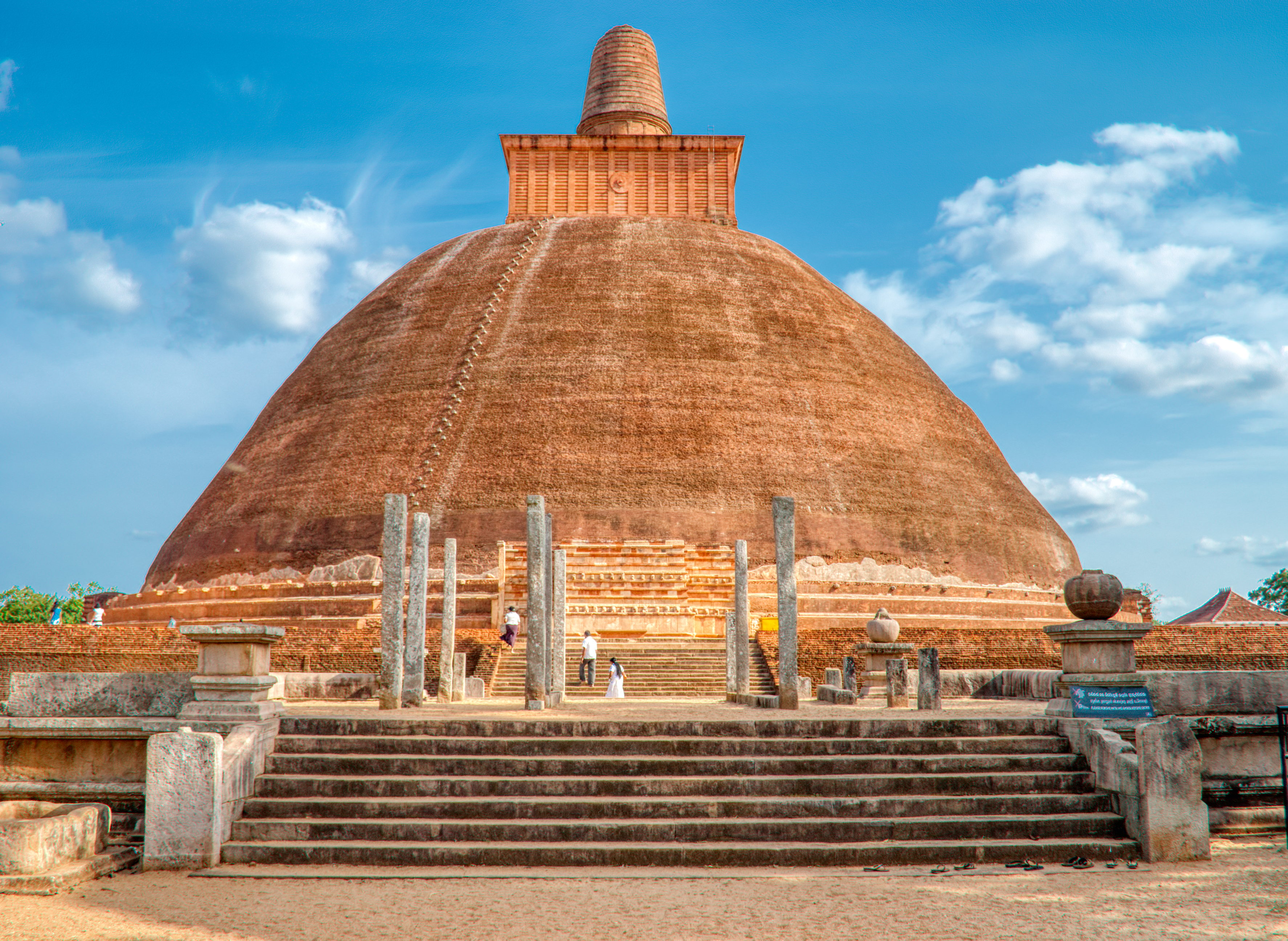|
Vahalkada
A vahalkada (), known as a frontispiece in English, is a structure constructed joining a stupa at its four cardinal directions as a decorative flourish. Later, these frontispieces came to be decorated or embellished with designs such as the creeper design. Stone slabs erected for the purpose of offering flower at the stupa too have been added to these frontispieces. See also *Ancient stupas of Sri Lanka *Architecture of ancient Sri Lanka The architecture of ancient Sri Lanka displays a rich diversity, varying in form and architectural style from the Anuradhapura Kingdom (377 BC–1017) through the Kingdom of Kandy (1469–1815). Sinhalese architecture also displays many ancient Nor ... References Stupas in Sri Lanka Architecture in Sri Lanka {{SriLanka-hist-stub ... [...More Info...] [...Related Items...] OR: [Wikipedia] [Google] [Baidu] |
Ancient Stupas Of Sri Lanka
Stupas, also called and cetiyas, are considered an outstanding type of architectural creation of ancient Sri Lanka. Under the influence of Buddhism, there were several changes in the field of architecture in Sri Lanka. The stupa commands a prominent place among these changes. The Stupa is also known by synonymous names such as Chaithya, Dagaba, Thupa, Seya and Vehera. Stupas designed and constructed in Sri Lanka are the largest brick structures known to the pre-modern world.Silva, R. 1990, "Bricks – A unit of construction in ancient Sri Lanka", ICTAD Journal, Vol.2, No. 1, pp. 21-42, Colombo. After Rev. Mahinda thero introduced Buddhism during the reign of King Devanampiya Tissa of Anuradhapura (307267 BCE), in the Sri Lanka’s ancient sacred capital of Anuradhapura, the king built the Anuradhapura Maha Viharaya, a mahavihara, after dedicating the Nandana and Mahamega royal pleasure gardens to the Maha Sangha. The earliest monument found in Sri Lanka is the Stupa, which is des ... [...More Info...] [...Related Items...] OR: [Wikipedia] [Google] [Baidu] |
Stupas In Sri Lanka
Stupas, also called and cetiyas, are considered an outstanding type of architectural creation of ancient Sri Lanka. Under the influence of Buddhism, there were several changes in the field of architecture in Sri Lanka. The stupa commands a prominent place among these changes. The Stupa is also known by synonymous names such as Chaithya, Dagaba, Thupa, Seya and Vehera. Stupas designed and constructed in Sri Lanka are the largest brick structures known to the pre-modern world.Silva, R. 1990, "Bricks – A unit of construction in ancient Sri Lanka", ICTAD Journal, Vol.2, No. 1, pp. 21-42, Colombo. After Rev. Mahinda thero introduced Buddhism during the reign of King Devanampiya Tissa of Anuradhapura (307267 BCE), in the Sri Lanka’s ancient sacred capital of Anuradhapura, the king built the Anuradhapura Maha Viharaya, a mahavihara, after dedicating the Nandana and Mahamega royal pleasure gardens to the Maha Sangha. The earliest monument found in Sri Lanka is the Stupa, which is des ... [...More Info...] [...Related Items...] OR: [Wikipedia] [Google] [Baidu] |
Frontispiece (architecture)
In architecture, the term frontispiece is used to describe the principal face of the building, usually referring to a combination of elements that frame and decorate the main or front entrance of a building. The earliest and most notable variation of frontispieces can be seen in Ancient Greek Architecture which features a large triangular gable, known as a pediment, usually supported by a collection of columns. However, some architectural authors have often used the term "frontispiece" and "pediment" interchangeably in reference to both large frontispieces decorating the main entrances, as well as smaller frontispieces framing windows which is traditionally known as a pediment. Frontispieces in pre-20th century architecture were considered decorative and ornamental structures used predominantly to dignify the façades of the building rather than for any structural or practical purpose. With the proliferation of minimalistic ideas in 21st century architecture, a large emphasis is ... [...More Info...] [...Related Items...] OR: [Wikipedia] [Google] [Baidu] |
Stupa
A stupa ( sa, स्तूप, lit=heap, ) is a mound-like or hemispherical structure containing relics (such as ''śarīra'' – typically the remains of Buddhist monks or nuns) that is used as a place of meditation. In Buddhism, circumambulation or ''pradakhshina'' has been an important ritual and devotional practice since the earliest times, and stupas always have a ''pradakhshina'' path around them. The original South Asian form is a large solid dome above a tholobate or drum with vertical sides, which usually sits on a square base. There is no access to the inside of the structure. In large stupas there may be walkways for circumambulation on top of the base as well as on the ground below it. Large stupas have or had ''vedikā'' railings outside the path around the base, often highly decorated with sculpture, especially at the torana gateways, of which there are usually four. At the top of the dome is a thin vertical element, with one of more horizontal discs spreadin ... [...More Info...] [...Related Items...] OR: [Wikipedia] [Google] [Baidu] |
Architecture Of Ancient Sri Lanka
The architecture of ancient Sri Lanka displays a rich diversity, varying in form and architectural style from the Anuradhapura Kingdom (377 BC–1017) through the Kingdom of Kandy (1469–1815). Sinhalese architecture also displays many ancient North Indian influences. Buddhism had a significant influence on Sri Lankan architecture after it was introduced to the island in the 3rd century BC, and ancient Sri Lankan architecture was mainly religious, with more than 25 styles of Buddhist monasteries.Pieris K (2006), Architecture and landscape in ancient and medieval Lanka Significant buildings include the stupas of Jetavanaramaya and Ruwanvelisaya in the Anuradhapura kingdom and further in the Polonnaruwa Kingdom (11th–13th centuries). The palace of Sigiriya is considered a masterpiece of ancient architecture and ingenuity, and the fortress in Yapahuwa and the Temple of the tooth in Kandy are also notable for their architectural qualities. Ancient Sri Lankan architecture is also sign ... [...More Info...] [...Related Items...] OR: [Wikipedia] [Google] [Baidu] |





